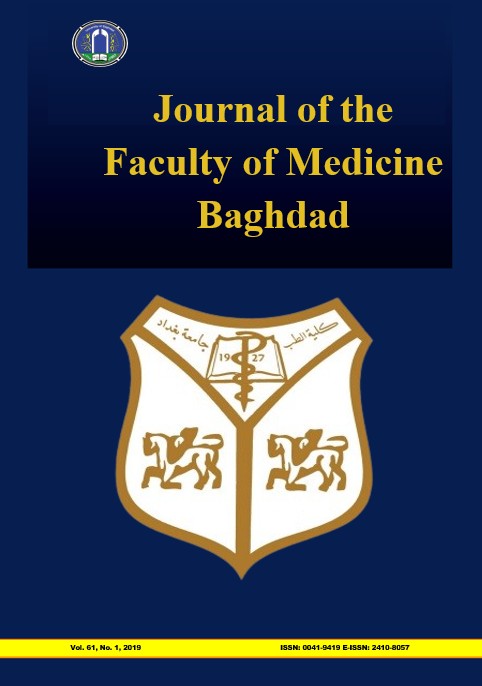Etiological factors of cholestasis ininfancy andearly childhood in Children Welfare Teaching Hospital
DOI:
https://doi.org/10.32007/jfacmedbagdad.611487Keywords:
Key word: Cholestasis, children, etiologyAbstract
A
Background: Neonatal cholestasis is defined as prolonged elevation of the serum level of conjugated bilirubin beyond the first 14 days of life. There are many causes of neonatal cholestasis which must be identified because early intervention may result in a better outcome , such as surgical intervention in biliary atresia within two months from birth , or effective dietary management in metabolic disorders like galactosemia. Objective:To determine the causes of early childhood cholestasis in children attending the Children Welfare Teaching Hospital in Baghdad and to study some of associated factors in infancy and early childhood cholestasis. Patient and method: This is a cross sectional descriptive study conducted on 48 patients attending the Children Welfare Teaching Hospital in Baghdad for the period of 1Novembe r 2015 to 15 January 2016. These cases were evaluated by thorough history, examination and investigations. Results:O the 48 patients enrolled in this study, 30 (62.5%) lived in Baghdad, and the remaining 37.5% were referred from other governorates . the mean age of the patients was 11.1 ± 12.4 months, with 20 females (41.7%) and 28 males (58.3%). The Results revealed that 11(22.9%)were the result of congenital infections , 9 (18.8%) were idiopathic in origin, 8 (16.7%) were caused by biliary atresia, 8 (16.7%) of unknown origin, 5 (10.4%) were caused by sepsis (mainly staphylococcus, streptococcus species, E coli, staphylococcus aureus) , 2 (4.2%) were caused by progressive familial intrahepatic cholestasis and 1 (2.1%) case was caused by each of the following causes: Alagille snyndrome, Choledochal cyst, Galactosemia, hypothyroidism and Tyrosinemia. Conclusion: Congenital infections were the most common cause in this study, of which the most common is cytomegalovirus ( CMV ). Clay color stool and high alkaline phosphatase levels were found mostly in biliary atresia. No method by itself is sufficient to diagnose the cause of neonatal cholestasis. D iagnosis can only be established using all available methods.











 Creative Commons Attribution 4.0 International license..
Creative Commons Attribution 4.0 International license..


